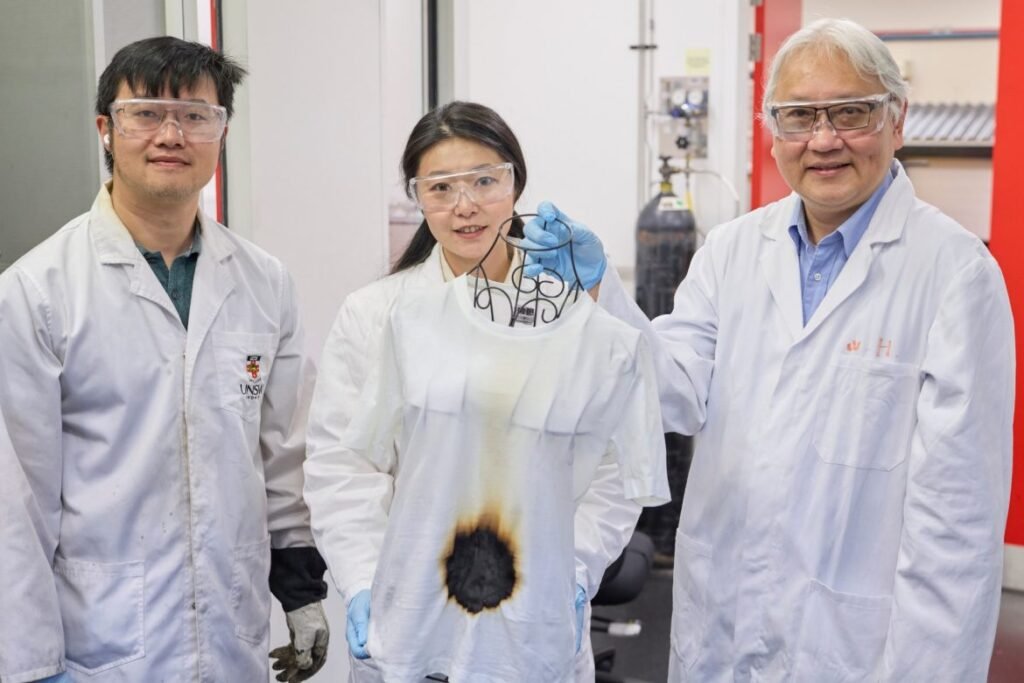Researchers at the University of New South Wales (UNSW) have developed an advanced fire-resistant spray that significantly slows down how quickly cotton fabrics ignite, thereby reducing the risk of burns.
The spray is designed for everyday cotton-based materials, such as shirts and bedding, making it especially useful for households in bushfire-prone regions or during emergencies. Its water-based formula applies a nearly invisible protective layer without affecting the fabric’s softness or breathability—an issue that often arises with textile coatings.
The research, led by Professor Guan Yeoh and his team from UNSW Mechanical and Manufacturing Engineering, has been in development for two years. It was funded through a $5 million grant from the Australian government under the ARC Research Hub for Fire Resilience Infrastructure, Assets and Safety Advancements (FRIASA).
This is not Prof. Yeoh’s first breakthrough. In 2023, his team created FSA Firecoat, Australia’s first fire-retardant paint to pass the BAL-40 test, which is now commercially available at Bunnings.
“We chose cotton because it’s one of the most common materials used in the clothing and textile industry,” Prof. Yeoh explained.
“What we’ve achieved is a solution that doesn’t smell and doesn’t change the softness of the cotton once it’s sprayed on. So, the item of clothing still feels the same as before.”
Plant-Based Formula, Long Shelf Life
The spray is made using non-toxic ingredients—a combination of phosphorus and nitrogen-based binders along with a plant-derived cellulose extract, commonly sourced from cotton, wood pulp, or other biomass. Together, these elements create a thin protective coating that bonds strongly with natural fibres. Phosphorus strengthens the carbon layer, helping it repel heat.
Prof. Yeoh noted:
“In the final formulation, we only use a concentration of about 10 to 15% to make it easier to spray onto surfaces – and it dries instantaneous too.”
This ensures the fabric becomes highly resistant to burning, with minimal impact on softness or colour. The spray is also long-lasting, with sealed bottles maintaining their effectiveness for over a year.
Tested Fire Protection Capabilities
In lab trials, cotton treated with the spray was compared to untreated samples under direct flame exposure. Results showed that:
- Treated fabric ignited twice as slowly as untreated cotton.
- Heat release was reduced by nearly 50%.
- Flames charred treated fabric instead of igniting it completely.
- Peak heat release rate (PHRR) fell by about 89%, meaning treated cotton produced only 11% of the heat output of untreated cotton.
Prof. Yeoh highlighted another key benefit:
“In simulated fire environments, treated fabrics kept temperatures on the skin-side below 40 degrees Celsius, even when the external environment hit 100 degrees Celsius.
It’s like standing in boiling water versus feeling warm – that difference could prevent scalding or burns to the skin.”
Durability and Wash-Off Feature
The spray withstands light water contact but dissolves completely in rigorous washing. Tests confirmed that once washed off, treated fabrics returned to their original flammability.
“What we wanted to demonstrate was whether washing off the coating would return the fabric to its original flammability,” Prof. Yeoh said.
“And it did, which shows that the coating provides that protective layer on your shirt or pants until you wash it off.”

Commercial Prospects and Next Steps
The UNSW team has partnered with AI solutions company N2N AI to bring the spray to market, with commercial availability expected within the next year.
“There are still a few hurdles to clear, but the biggest one, fire performance, is already behind us,” said Prof. Yeoh.
The formula, with a neutral pH of 7, has so far shown no signs of skin irritation in low-dose tests. Further dermatological studies are underway. Researchers are also expanding tests to include synthetic fabrics like polyester, which have already produced promising results.
However, Prof. Yeoh emphasized realistic expectations:
“It’s an added layer of protection, not a magical force field.
And we’re not saying this will make people completely fireproof but it can slow down the rate of your clothes burning – and potentially reduce injury in a fire.
That delay could be crucial in emergencies, offering precious seconds to escape.”
